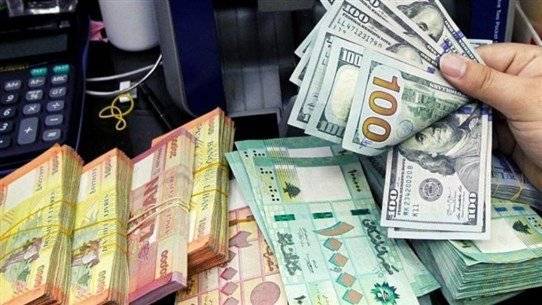The Lebanese government has raised the official exchange rate of the dollar tenfold for the first time in 25 years, following three years of financial, living, and economic crises that have led to a 25-fold devaluation of the currency. This decision marks the first official step towards unifying the exchange rate as demanded by the International Monetary Fund (IMF) and represents a financial acknowledgment of the crisis, based on the premise that the official rate maintained for the past three years (1500 lira to the dollar) is more like a fictional price.
Acting Finance Minister Youssef Khalil announced yesterday that the "Central Bank of Lebanon" has adopted an exchange rate of 15,000 lira to the dollar, instead of 1507, describing it as a step towards "gradually unifying the exchange rate" in the country. Khalil stated in a statement to Reuters that the implementation of this decision will begin at the end of October.
The Lebanese authorities have applied an official exchange rate of 1507 lira to the dollar since 1997. The value of the local currency has decreased approximately 25-fold since the crisis began in October 2019, where it is currently traded in the parallel market at around 38,000 lira to one dollar.
Financial sources indicated that this decision "addresses international institutions, foremost among them the IMF, which insists on unifying the official rate," and pointed out in statements to Asharq Al-Awsat that the decision is "a prelude to unifying the exchange rate," which is currently traded at six different rates: the official rate fixed since 1997 at 1507 lira to the dollar, 8000 lira (the banking dollar used for withdrawing US dollar deposits), 12,000 lira (the dollar price for withdrawals in local currency from dollar deposits according to Circular 161 issued by the Central Bank), 15,000 lira (the customs dollar price approved by the parliament last Monday), 30,000 lira (the price on the "Sayrafa" platform of the Central Bank), and the parallel market exchange rate, which approaches 38,000 lira.
While local banks and financial institutions await the regulatory circulars for this decision to be issued by the Central Bank of Lebanon, what is known as the "customs dollar" will be canceled to become the official dollar exchange rate. The decision is expected to eliminate three established exchange rates in the market through circulars and measures from the Central Bank, establishing a reference exchange rate for cash withdrawals from dollar deposits, for paying customs duties, and for repaying loans in dollars.
Banking sources described this decision as "an advanced step towards exiting the policy of denial of the crisis" over the past three years and represents "an official acknowledgment that the previous rate was not a realistic price after three years of crisis," according to what they told Asharq Al-Awsat. They considered the decision "positive regarding unifying the exchange rate," which is one of the conditions set by the IMF for Lebanon to secure the much-needed aid package. The IMF stated last week that Lebanon's progress in implementing reforms remains extremely slow.
The Lebanese parliament approved the public budget for the year 2022 earlier this week, expecting to increase state revenues from fees and customs revenues tenfold after adopting the customs dollar at an exchange rate of 15,000 lira to the dollar. In contrast, public sector salaries will be tripled in an attempt to enable employees to cope with the living crisis after the deterioration of their salaries' value.
The "Central Bank of Lebanon" adopted a price of 1507 lira to the dollar as a semi-fixed reference price without an official formula, which contributed to creating financial balance in the market for 22 years, from 1997 until 2019. The Central Bank has always defended this price which it set, keeping it stable over the years.




